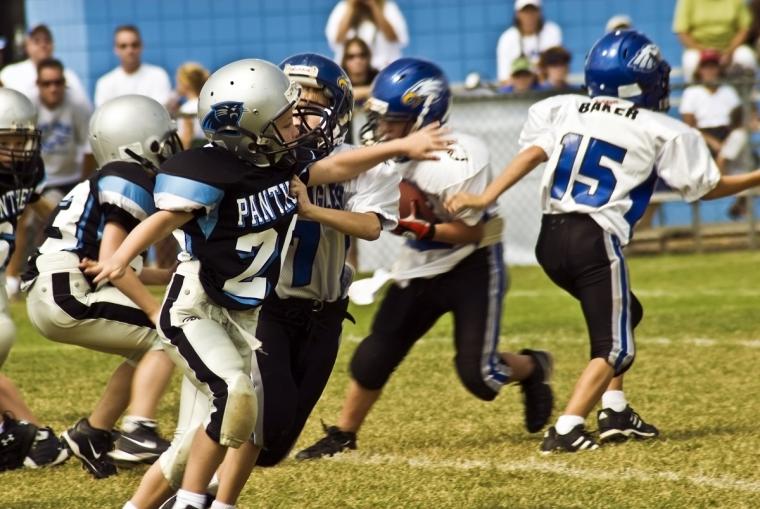
While the sports tourism industry historically has proven to be inflation-proof, it’s not quite pandemic proof.
New data from the Sports & Fitness Industry Association’s “U.S. Trends in Team Sports Report” for 2022 indicates that while participation numbers are increasing, they are not back to the levels established in 2019 before the coronavirus hit.
SFIA data shows that the number of team sports participants increased from 67 million in 2020 to 68.3 million in 2021, up 1.8 percent. But participation fell short of the 70.8 million participants in 2019. That said, there are positive signs for the future of team sports, as the number of participants in the 6- to 12-year-old age group increased from 17.0 million to 17.6 million year-over-year.
“The number of 6-to-12-year olds playing sports not only increased in 2021, but it is the highest we have seen in the last five years,” Tom Cove, president and chief executive officer of the SFIA, said in a statement. “After free play and recess, team sports are often the first regular physical activity in which children participate, and the experience can be the foundational connection to a lifetime of sports and fitness participation.”
As has been the case for many years, SFIA data shows that basketball continues to be the most-played team sport in the U.S., with 27.1 million participants in 2021. Basketball proved throughout the pandemic to have maintained a high participation rate, as it is easy to play solo, in social formats and in small-sided games, plus it has a low cost of entry. Soccer, however, overtook basketball as the top sport for 6-year-olds in 2021, and SFIA officials expect World Cup-related excitement to help further fuel participation.
 Among 23 team sports, the most significant year-over-year changes in participation rates on a percentage basis belonged to fast-pitch softball (+15.3%), gymnastics (+10.9%), court volleyball (+8.1%) and swimming on a team (+8.0%). The 2020 Summer Olympics, postponed until 2021 because of the pandemic, likely aided participation in these activities, according to the SFIA.
Among 23 team sports, the most significant year-over-year changes in participation rates on a percentage basis belonged to fast-pitch softball (+15.3%), gymnastics (+10.9%), court volleyball (+8.1%) and swimming on a team (+8.0%). The 2020 Summer Olympics, postponed until 2021 because of the pandemic, likely aided participation in these activities, according to the SFIA.
Five team sports — flag football, grass volleyball, fast-pitch softball, court volleyball and basketball — increased core participation over a five-year average for 6- to 17-year-olds. And 11 sports increased total participation over a five-year average for the same age range.
“While people were back participating in sports, it is important to remember that many spring season team sports were not at full strength in early 2021 due to the Omicron COVID variant,” Cove said. “While conclusive evidence remains to be drawn, early indications suggest 2022 participation may reach, if not surpass, 2019 numbers as organized spring sports activities fully returned for the first time in two years.”
The SFIA 2022 U.S. Trends in Team Sports Report examines participation and market trends from 2021 in team sports and features in-depth data analysis of age group participation and specific takeaways. This year’s report also breaks down data on team sports coaches and training, and features a new section on young adult team sports participation, covering ages 18 to 24.
Year-over-year participation in that age group remained steady at 9.0 million, which is up 2.4% since 2018, according to the report. Perhaps surprisingly, participation among 18- to 24-year-olds across 23 team sports increased the most in 2021 in gymnastics, cheerleading and tackle football. The biggest declines, meanwhile, were in slow-pitch softball, swimming on a team and grass volleyball. The sport with the fastest growth rate over the last five years was basketball.
The SFIA report also noted that the number of current and former coaches decreased from year to year for the first time since 2016.
“This is a figure that we will continue to track and watch moving forward to see if this decrease was an anomaly or the start of a trend,” the report’s authors wrote. “Coaches are an important part of the youth ecosystem, and we do not want to see this number continue to decrease. Participants are more likely to return to the game if they have a good coach.”
A total of 18,000 online interviews were conducted in 2021, and strict quotas associated with gender, age, income, region and ethnicity were followed to ensure a balanced sample, according to the association. Activity reporting is based on a rolling 12-month participation rate.
A copy of the entire 69-page report can be ordered here. It is free to SFIA members; the cost for non-members is $649.

